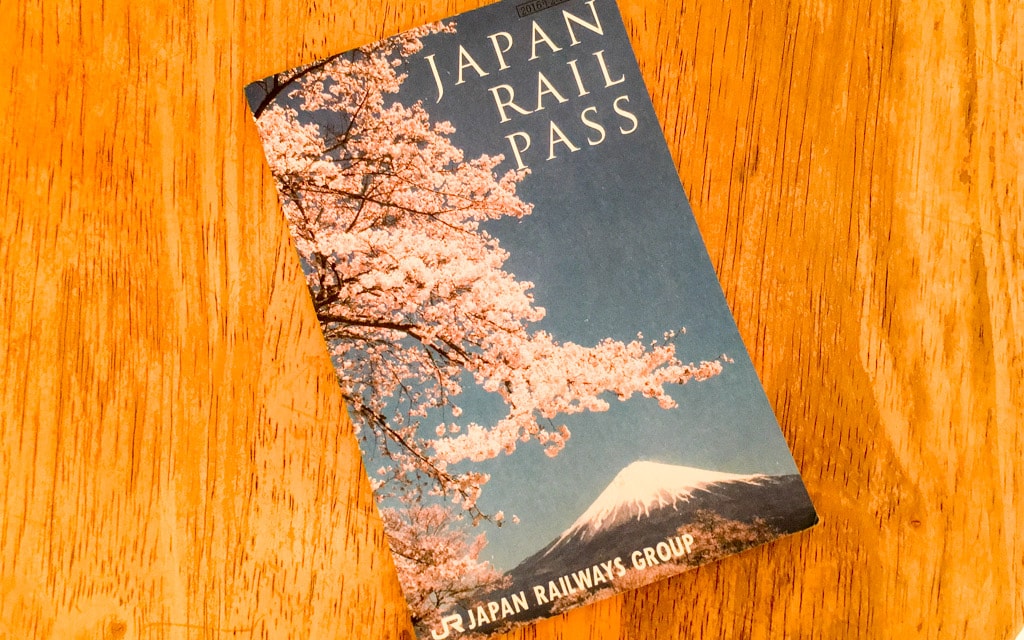
If you are planning to travel to Japan, and want to explore this beautiful country by train, then purchasing a Japan Rail Pass (JR Pass) is a must.
These train passes, good for 7, 14, or 21 consecutive days of travel, will allow you to move around the country effortlessly, and most importantly, economically.
When traveling to a new country, and using a new form of transportation, you probably have questions such as:
- What is a Japan Rail Pass?
- How do you purchase a Japan Rail Pass?
- Where do you buy a Japan Rail Pass?
- How do you make reservations for a JR trains?
- How do you find JR train schedules and timetables?
This guide will help answer these questions.
What is a Japan Rail Pass (JR Rail Pass)?
A Japan Rail Pass, also known as the JR Rail Pass or JR Pass, is a cost effective train pass offered exclusively to foreign visitors which allows for unlimited use of most JR (Japan Railways) trains for travel across Japan.
The Japan Rail Pass can only be purchased and used by foreign visitors to Japan. Japanese nationals with permanent residence outside of Japan will not be able to purchase or use the pass after April 1, 2017.
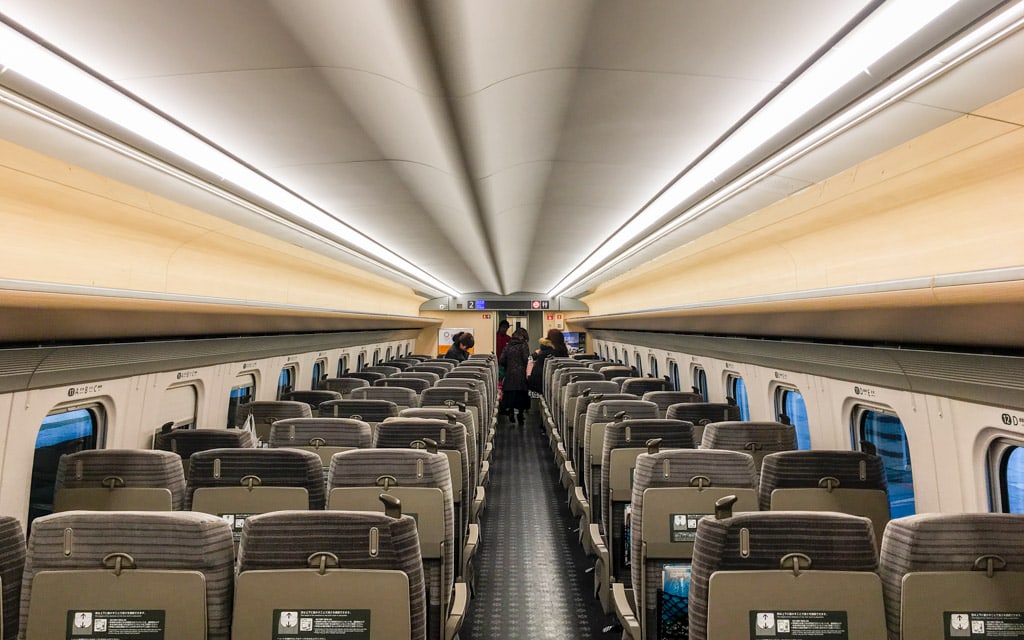
There are two types of passes: ordinary (2nd class) and green car (first class).
Green cars have slightly larger seats with more foot room. The cars are usually less crowded as the fares are more expensive than ordinary and these cars are not covered by the Japan Rail Pass. Green cars are available on most Shinkansen and limited express trains. You might see green cars on some local trains.
In my opinion, there’s really no reason to spend money on a green car. If you have a Japan Rail Pass, you will always take ordinary cars anyways as these cars are fully covered by your pass. The seats inside ordinary cars are more comfortable than any airline seat. They have more foot room than you need, and even better, they recline.
The Japan Rail Pass is valid on
:
- Most nationwide trains operated by JR (Japan Railways) including Shinkansen (bullet trains), limited express trains, express trains, rapid trains, and local trains
- Tokyo Monorail between Haneda Airport and Hamamatsuchō Station
- Narita Express (N’EX) between Narita Airport and Greater Tokyo
- Limited non-JR lines
- Certain local, city, and tourist JR buses
- JR Miyajima ferry
The Japan Rail Pass is not valid on
:
- Nozomi and Mizuho Shinkansen trains
- Limited JR trains that operate on non-JR tracks
- Special compartments or berths including night trains which may require a supplemental fee
- Certain “liner” trains
- JR highway buses
Where to buy a Japan Rail Pass
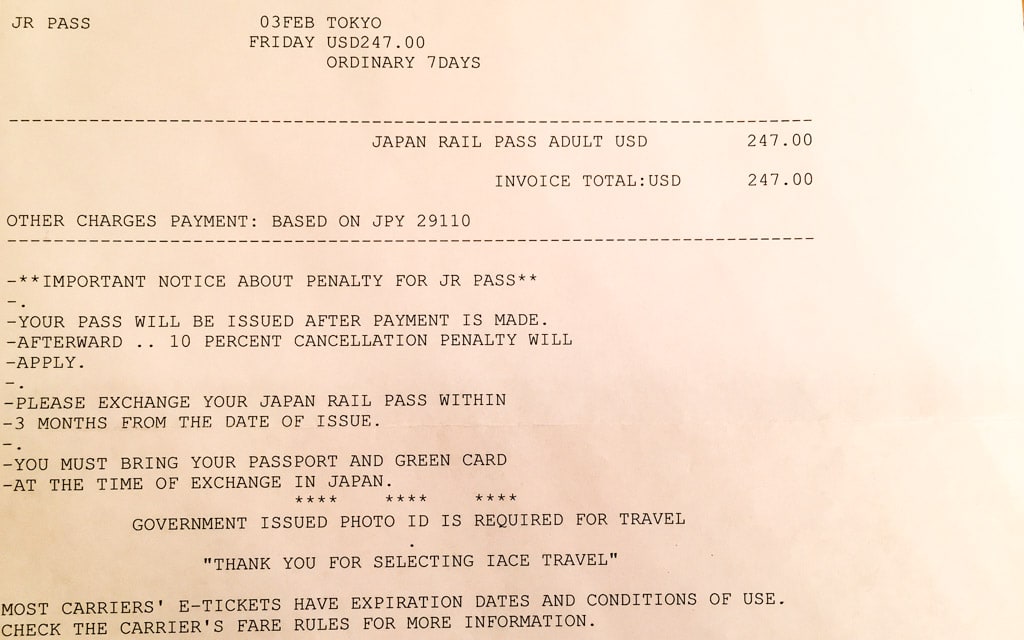
If you are planning to purchase a Japan Rail Pass, you will need to plan ahead as passes are currently not sold inside Japan*.
Passes can be purchased by using two methods:
- Online through an official seller such as JRailPass.com
- From a local travel agency
Cost of a Japan Rail Pass (purchased outside of Japan):
| Duration | Ordinary (Standard Class) | Green Car (First Class) |
|---|---|---|
| 7 consecutive days | 50,000 yen | 70,000 yen |
| 14 consecutive days | 80,000 yen | 110,000 yen |
| 21 consecutive days | 100,000 yen | 140,000 yen |
After making your purchase online or at a travel agency, you will receive only a voucher, not the physical pass. This voucher must be exchanged in Japan on your visit. After exchanging your voucher, you will receive your actual Japan Rail Pass.
Exchanging your voucher for your Japan Rail Pass
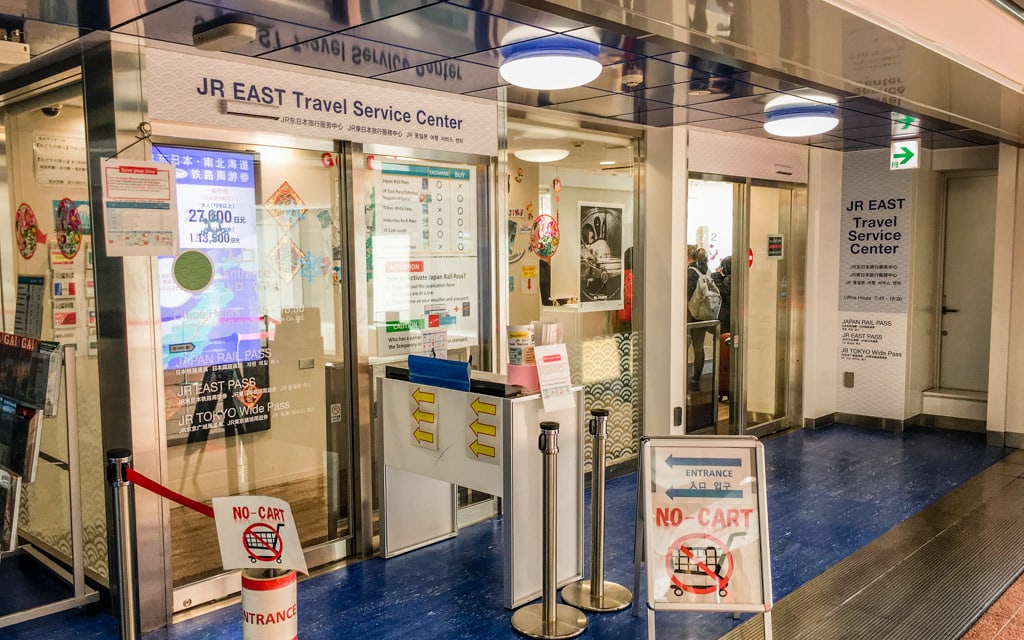
As mentioned before, if you purchase a rail pass on the internet or through a travel agency outside Japan, you will receive a voucher, not your actual pass.
To receive your JR Rail Pass, you will need to exchange your voucher for the pass at one of many JR Travel Service Centers or JR offices. Just be sure to have your passport on hand to verify your identity and country of origin.
These service centers can be found all across Japan at major stations and airports such as Narita Airport, Haneda Airport, and Tokyo Station.
Click here for a full list of JR service centers and ticket offices.
When you receive your pass, you do not need to start using your pass right away. You may select your start date on the day you receive your pass or on any date within a one month period.
After you select a starting date for your JR pass, make sure you double check your end date. The date you start your pass counts as day 1. This means if you purchased a 7 day pass, and your first day is a Friday, your last day to use the pass would be the following Thursday. Some people mistakenly think their pass end date would be one week from the start date, but this is incorrect.
Using Hyperdia: JR train schedules, timetables, and routes
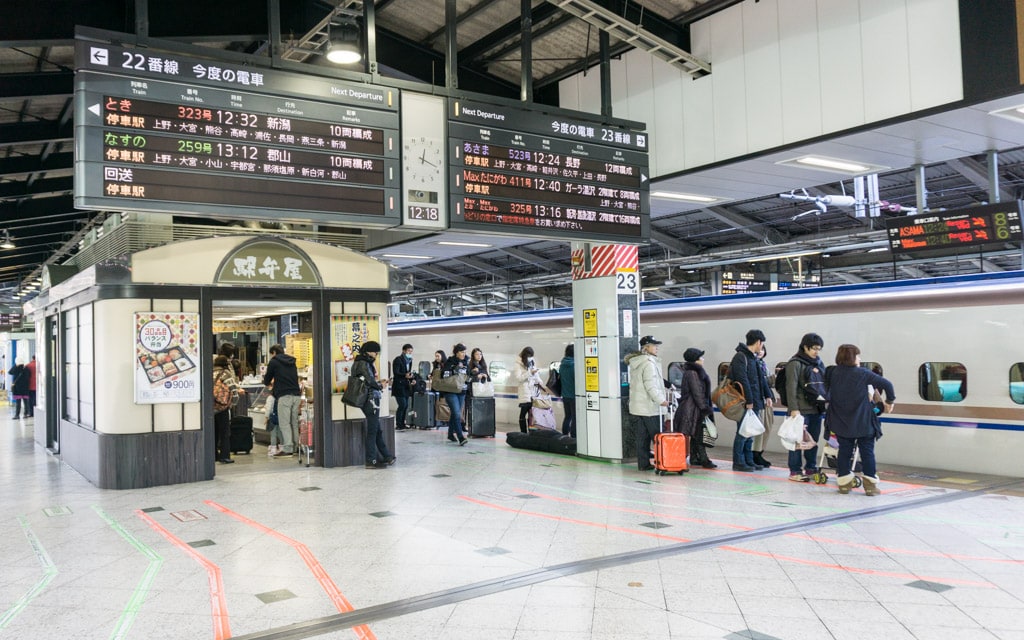
Now that you have your Japan Rail Pass in hand, it’s time to plan your journey.
Japan has a huge network of trains. For first time visitors to Japan, planning a trip by rail might seem overwhelming.
You probably have a lot of questions:
- How do you know which train to take?
- How do you find the timetable for a certain train?
- How long does a train take to get from one station to another?
- Is a certain train covered by my Japan Rail Pass?
This is where Hyperdia becomes your best friend.
Hyperdia is an efficient and reliable Japan train route finder with an English interface. With a quick search, you can find valuable route information including timetables and fares.
Here is an example for traveling from Tokyo to Kyoto by train:
- Step 1
- Step 2
- Step 3
Visit http://www.hyperdia.com/en/
For this example, enter your origin station (From) as Tokyo and your destination station (To) as Kyoto.
Now enter your desired Date and Time. For this example, 01 March 2017 at 9 AM.
Click on “More options.”
If you are a Japan Rail Pass holder, you will want to uncheck Private Railways and “NOZOMI/MIZUHO/HAYABUSA.”
Note: Your pass is not valid on Nozomi and Mizuho trains, but is valid on Hayabusa trains. If you plan to travel on a Tohoku Hayabusa Shinkansen train, you will need to keep this boxed checked. This can be a little confusing.
It also might be a good idea to uncheck Airplane in situations where you would be traveling longer distances.
Now click search.
If you wanted to travel from Tokyo to Kyoto around 9 AM on March 1, 2017, you now know there is a train departing from track 14 of Tokyo Station at 9:03 AM bound for Kyoto. The name of the train is SHINKANSEN HIKARI 465. The journey of 513.6KM takes 164 minutes with 0 transfers.
The price of this journey, including a seat reservation, would be 13,600 yen. With your Japan Rail Pass, you can ignore this price as your pass will cover the full fare and seat reservation. Just remember that if the name of any train is Shinkansen Nozomi or Shinkansen Mizuho, you will not be able to board this train with your Japan Rail Pass.
If you wanted to take this train, all you would need to do is visit a JR ticket office and make a seat reservation for Shinkansen Hikari 465 at 9:03 AM on March 1, 2017.
It’s that easy. Just follow the same directions for any two train stations.
How to make seat reservations for JR Trains
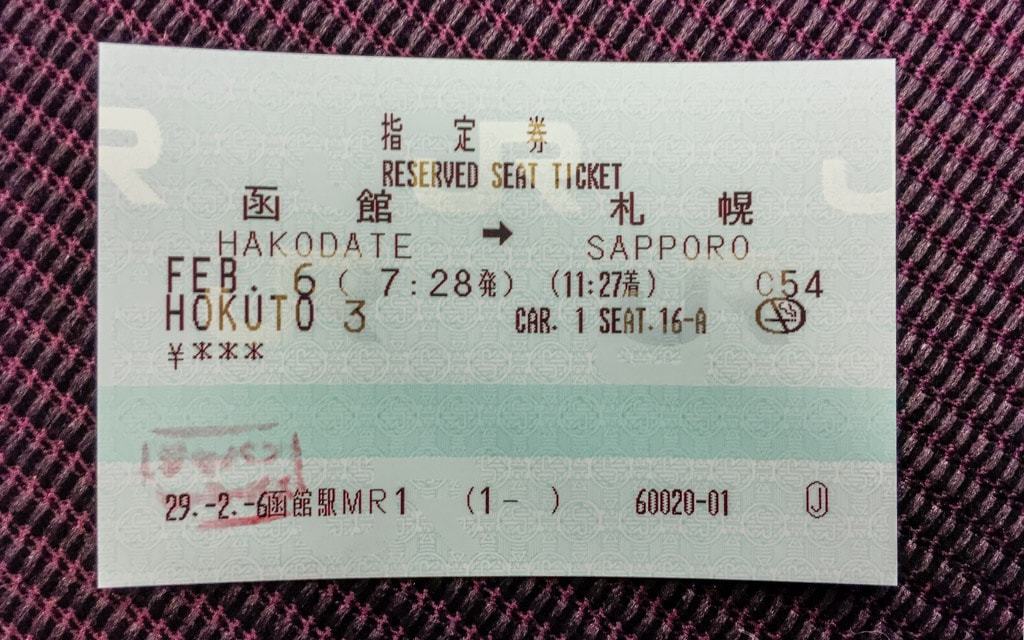
If you have a Japan Rail Pass, seat reservations for JR trains can be made for free.
Reservations can be made at any JR ticket office in Japan. Simply present your rail pass at the counter and select the train you would like a seat reservation for.
If you would like to make a reservation for a train, simply take your Japan Rail Pass to any JR ticket office in Japan. Present your rail pass at the counter and pick your desired train.
Reservations are optional but recommended on busy routes such as Shinkansen trains and during busy summer months. If you know your plans ahead of time, it’s a good idea to make seat reservations since they are free for pass holders. In the winter season, it’s rare to find a sold out train.
Some train lines such as Narita Express, Akita Shinkansen, Hayabusa Shinkansen, and Hokuriku Shinkansen require a seat reservation. On the other hand, on certain urban and local trains, reservations are not even possible. Seating is first come, first serve.
If you board a train without a seat reservation, and the train does not require a seat reservation, then you will have to sit in one of the unreserved cars or stand if the seats are full. This applies even if you have a rail pass. Seat reservations cannot be made onboard the train. So this is why it’s recommended to make seat reservations ahead of time.
This is what makes the Japan Rail Pass so great. It gives you the freedom to jump on and off trains at your own pace. When I visited Sendai, I took a train one hour west to Yamadera Temple. I had the freedom to spend as much time as I wanted at the temple knowing I could jump on any train back to Sendai. Once in Sendai, I made a seat reservation on the spot for the next Shinkansen to Tokyo.
How to use a Japan Rail Pass
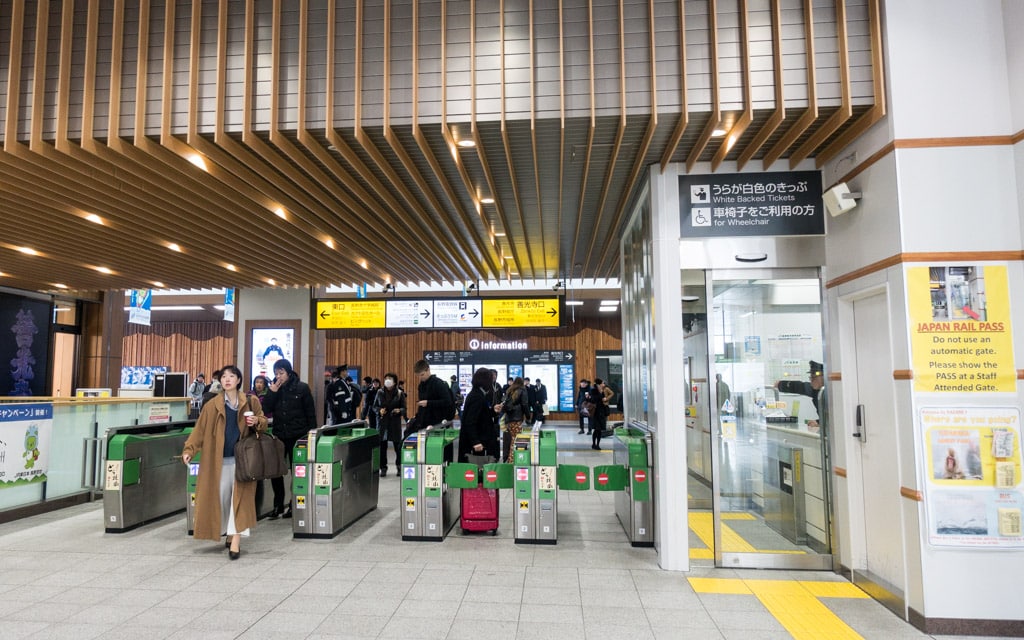
Now comes the exciting part. You have your rail pass and seat reservation in hand. It’s time to finally travel.
At most train stations in Japan, there will be automatic gates and a manned gate. Japan Rail Pass holders may only use the manned gates. Your pass will not work through the automatic gates.
Simply walk through the manned gate and present your pass to the attendant who will check the date on your pass and wave you through. On rare occasions, your passport might be checked to see if it matches the name on the rail pass, but this has never happened once to me.
Now that you have passed through the gates, all you need to do now is look up on the board to find out which track your train is departing from.
When you reach your destination, you will once again pass through the manned gate and present your rail pass.
Is purchasing a Japan Rail pass worth it?
It depends.
If you are going to stay in one city, such as Tokyo, then a rail pass might not be worth the cost.
Now say you are planning to travel around the country to different cities and regions, then a rail pass can possibly save you (lots of) money.
One popular itinerary for visitors to Japan is to visit Kyoto and Osaka from Tokyo.
- Tokyo to Kyoto: 13,400 yen
- Kyoto To Osaka: 2,610 yen (if you use the Shinkansen to Shin-Osaka Station)
- Osaka to Tokyo: 13,940 yen
If you booked individual tickets, the total fare would run you 29,950 yen. A 7 day rail pass costs 29,110 yen, so it would be cheaper to buy a pass.
Now add in a day trip from Tokyo to Nikko or Kamakura, or even Sendai or Nagano, and the rail pass will start saving you a lot of money.
Last Updated on December 14, 2025
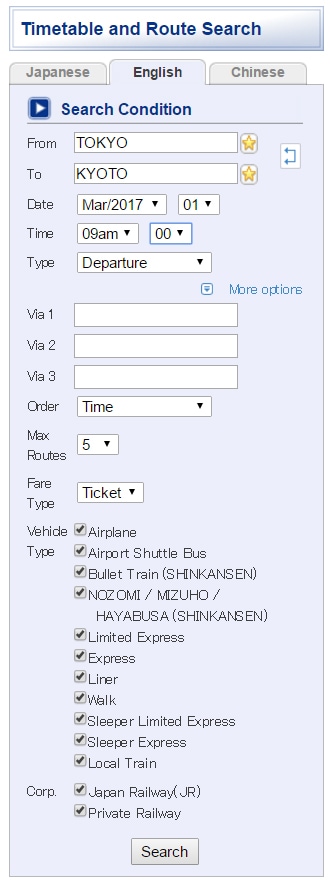


Hello Anthony, thanks for your information. Does every JR station have a JR office? We want to go at our own pace. Can we reserve the seat before we hop on the train at the JR station? Our vacation is in mid-Feb 2019. We plan to visit Tokyo, Gero, Takayama, Kanazawa, Nagano, etc. Thanks!
Jo,
I believe most, if not all JR Stations have ticket offices where you can make seat reservations for JR trains. You can make seat reservations at any time, even right before the train departs. If you know your plans ahead of time, I recommend booking seat reservations early, especially during peak travel months. You can always make changes or cancel the reservation if your plans change. In February, you shouldn’t have any issues. Even if you don’t have a seat reservation, most trains have unreserved seats. I do this once in a while when I am in a rush and most of the time I never have an issue finding a seat. Your plan sounds great. Those are some great cities, just be prepared for cold weather and snow.